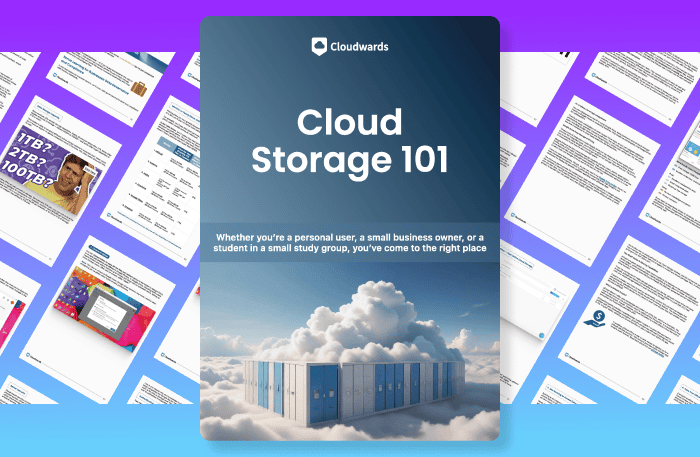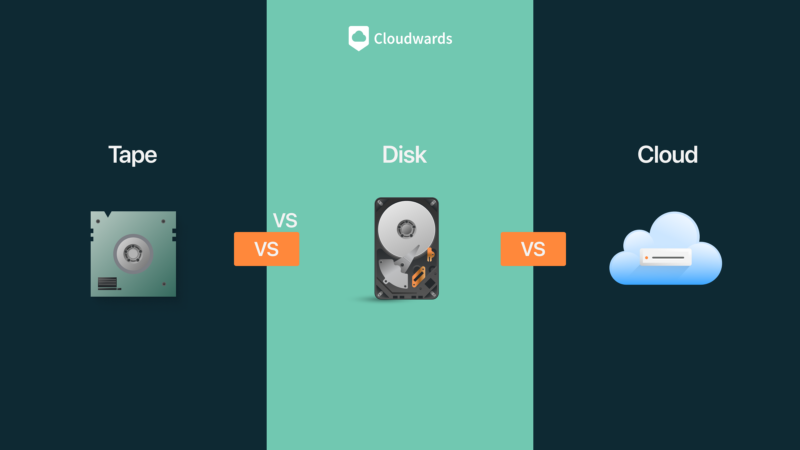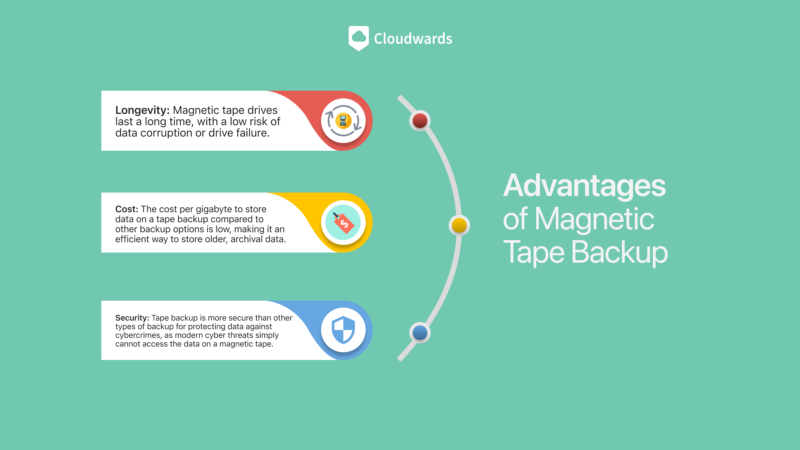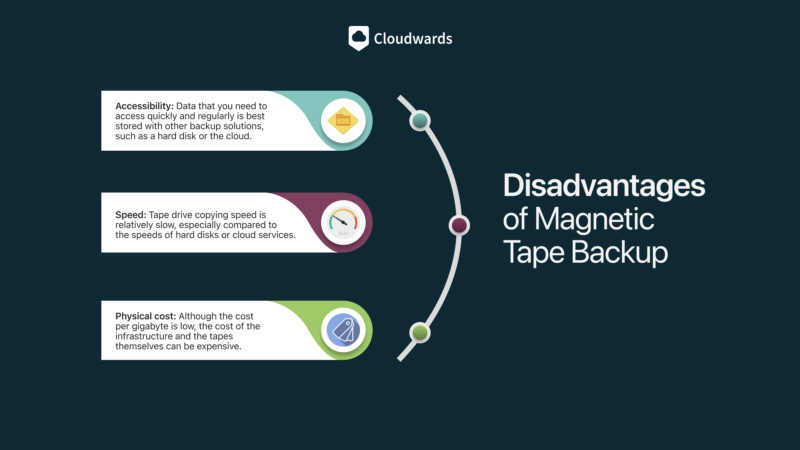Are Tape Backups Still Used in 2025? Cloud Storage
Tape backups, or tape drives, have been used to back up computer data since the mid-20th century. Are tape backups still used, though? In this article, we dive into the details of the modern uses for this older technology.
Before the advent of relatively recent technologies such as hard disk drives and cloud-based services, tape drives or tape backups were the most common way to record and store data. They are now considered an older technology, which begs the question: Are tape backups still used today?
Tape backups are not as fast or as effective as the best online backup services. However, that does not mean tape drives are not useful for certain cases or customers. Before we look at the ways tape backups are still used today, it is important to understand what a tape backup is and how it is used.
-
05/31/2024 Facts checked
This article was updated to capture the modern-day use cases of tape drives and their advantages and disadvantages.
What Is a Tape Backup?
A tape backup, also called a tape drive, is a data storage device that uses magnetic tape to record data. In other words, it copies backup data. A tape drive can also read data, so you can access it again later on. Tape drives are mainly used to store archival data, which we will get into later in the article.
The main difference between a tape drive and a hard disk drive is that a tape drive uses sequential access storage. Sequential access means data is arranged in a specific, ordered sequence rather than randomly, as with a hard disk. This means that accessing data on tape drives is a significantly slower process.
10,000+ Trust Our Free Cloud Storage Tips. Join Today!

- Demystify cloud storage terminology and key concepts in plain language
- Discover easy-to-implement techniques to securely backup and sync your data across devices
- Learn money-saving strategies to optimize your cloud storage costs and usage

Magnetic Tape Formats
Magnetic tape drives come in five different formats, each of which is used for a specific purpose depending on the overall storage capacity. Additionally, in some instances, the tape format also impacts the transfer rate.
- Advanced intelligent tape: Sony developed this magnetic tape format as a high-speed, high-capacity option. It is no longer in use, but was notable for its backward and forward compatibility. It originally had a storage capacity of 65GB compressed and a transfer speed of 4 MB/s.
- Digital audio tape: Another Sony development, this format resembled a compact cassette tape used for audio recording and playback. As the name implies, digital audio tape was digital instead of analog, and only recorded and played in one direction.
- Digital linear tape: Also called CompacTape, digital linear tape was developed in 1984 and had an original storage capacity of 94MB per cartridge. The most recent model is from 2006, with a storage capacity of 800GB and a data rate of 60 MB/s.
- Linear tape-open: Also known as LTO Ultrium, this format is primarily used for data archiving and was developed as an open standard rather than as a proprietary technology. The first generation had a capacity of 200GB and a transfer speed of 20 MB/s.
- Quarter-inch cartridge: Developed in 1972, quarter-inch cartridges are an older format, though they are still in use today. Quarter-inch tape has gone through numerous variations and advances.
Are Tape Backups Still Used in 2024?
The short answer is yes. Even with the popularity and ease of use of cloud-based backups, magnetic tape drives still have a place in the digital world, especially for archival data. For example, media companies and libraries still make use of magnetic tape drives.

In many cases, companies need to hold on to data for a predetermined amount of time due to laws or regulations. Financial data is a good example. Many companies, including government agencies in the U.S., need to hold on to older financial data for auditing purposes. A magnetic tape backup is a good candidate for holding that data.
Why Use Tape Backup?
There are a few reasons why businesses or even individuals would consider using tape backup instead of more modern backup applications. Larger companies that need to store old data can use tape storage for regulatory compliance. This helps free up space on hard disks and the cloud, which are accessed more often.
Backup Tape Storage Best Practices
Using and maintaining a tape backup library requires a few considerations that are not necessary with other, more modern forms of backup. A good example is the care and handling of tape drives. Magnetic tape drives live in physical storage spaces and can deteriorate over time if not maintained. Here are a few other considerations for adhering to best practices:
- Multiple copies: Businesses can keep one data copy onsite and another offsite, similar to 3-2-1 backup rule recommendations.
- Limited access: To protect the data stored on tapes, it is important to keep tape inventories accurate and the tapes themselves clean. Limiting access to only a few essential people helps maintain control.
- Security measures: Though modern cyber threats like ransomware and malware are less likely to be an issue with tape drives, which typically do not have an online presence, using an antivirus to scan the data before copying it to a tape drive limits potential corruption.
Why Should You Replace Tape Backup with Cloud Storage?
Tape backups have a valid place in the world of data backup. However, cloud storage is the better option for storing data you need to access frequently. You can access and back up data far more quickly with cloud storage. The best cloud storage services are also the preferred way to share data and collaborate with others, which is not feasible with tape backup.
Final Thoughts
Tape backups have been around for decades, but they are not the best solution for every backup need. However, tape drives do still have a place in modern backup strategies, as they are a great option for storing archival data. Tape drives also help businesses stay compliant with data storage regulations.
Have you ever used a tape backup? Does your business or company use tape backups for data storage? Do you think tape backups will ever become obsolete? Let us know in the comments section below. Thanks for reading our article.
FAQ: Tape Backup Solution
Yes, linear tape-open (LTO) is a commonly used tape drive format that businesses in many industries still use. LTO tapes are great for storing archival data and are the most common type of tape backup used today.
Tape backups are very reliable. They are not often prone to failure and can hold data for years without corruption or loss of fidelity.
No, tape drives are not making a comeback. However, they provide a specific use case for many businesses and still play a role in data backup strategies.
Tape storage is an effective way to store old or archival data on a reliable medium. This frees up space on more modern cloud backup storage solutions for frequent, easier access to more relevant data.




